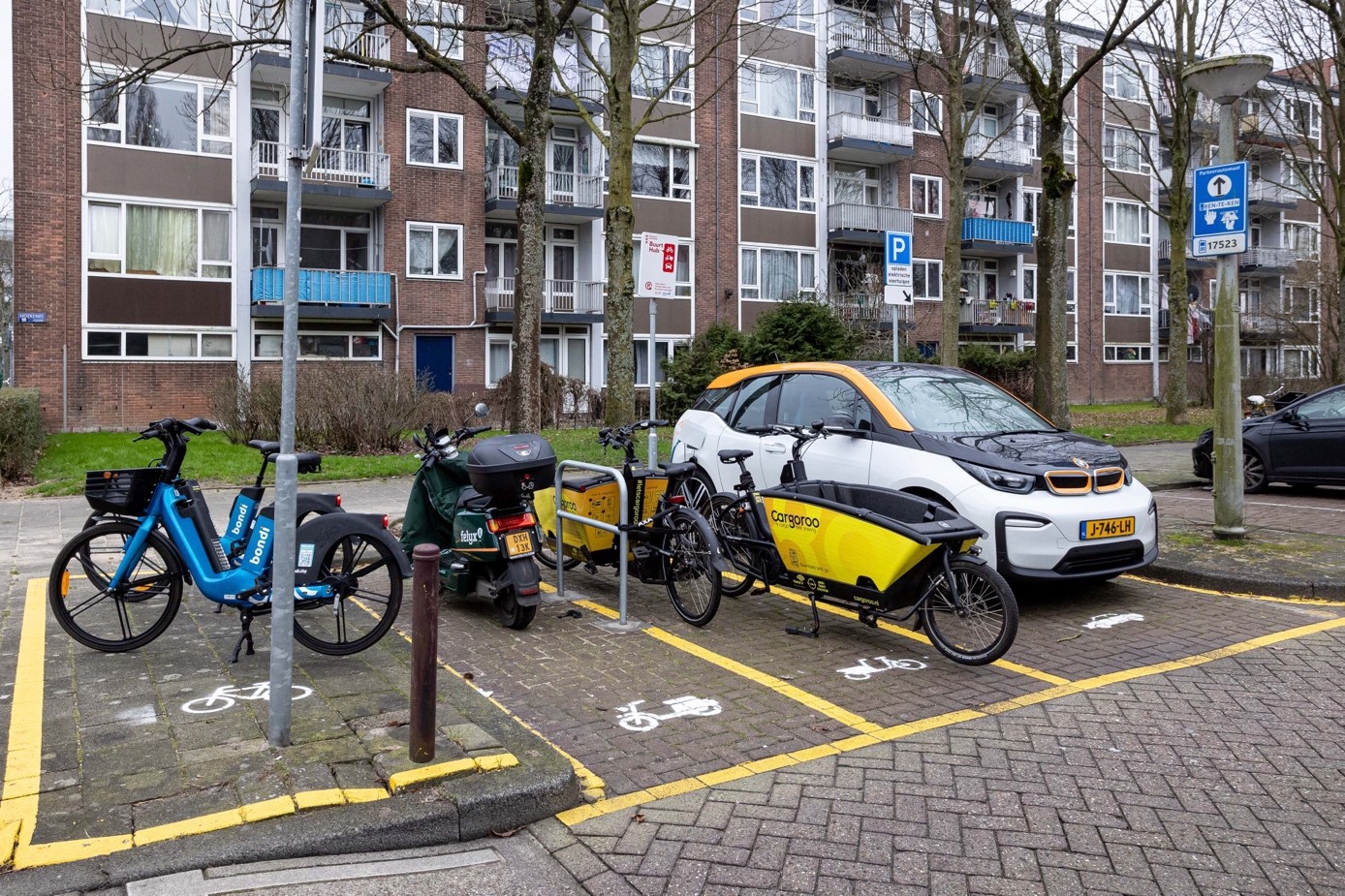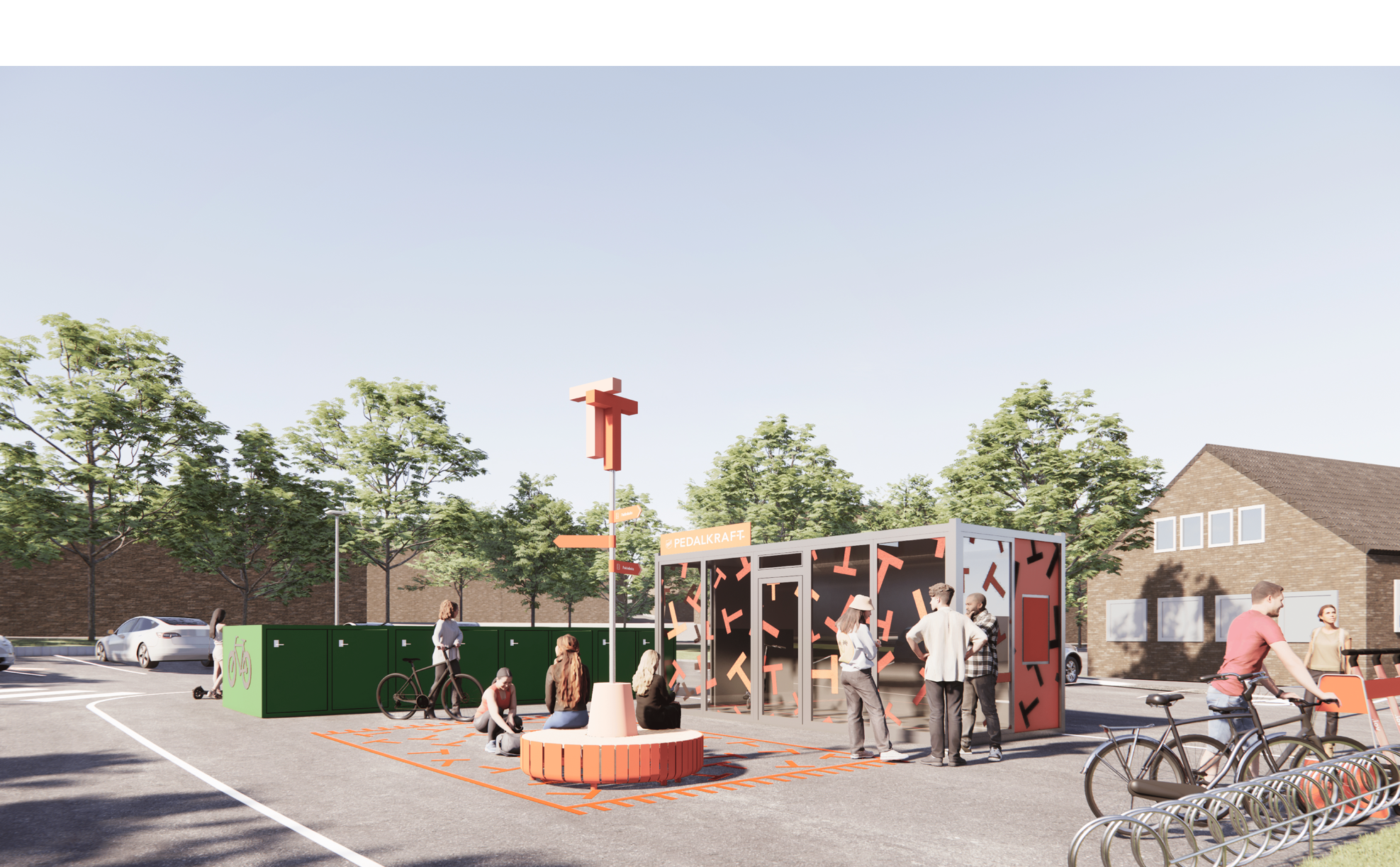ShareDiMobiHub helped cities and regions shape the policies that will make shared mobility hubs a lasting part of their transport systems. Through deployment plans, spatial visions, upscaling strategies, communication frameworks, and impact studies, partners turned practical experience into long-term guidance. These reports now serve as a learning ground for policy officers, planners, and decision-makers aiming to embed shared mobility in their urban and regional strategies.
What does it take to turn the idea of shared mobility hubs into a lasting part of urban and regional transport systems? Beyond pilots and digital tools, it requires clear policies, strategies, and action plans. Throughout ShareDiMobiHub, local and regional authorities have used the partnership as a platform to draft new visions, refine existing mobility strategies, and explore how hubs can be scaled within different governance and spatial contexts.
The result is a rich collection of strategic documents: from deployment frameworks and communication plans to spatial visions and upscaling strategies. Together, they reflect the policy backbone of the project — showing how cities and regions are embedding shared mobility hubs into the heart of their long-term mobility transitions.
Strategies shaping the mobility transition
Authorities approached shared mobility hubs from very different starting points. Some focused on testing new ideas through pilots, while others concentrated on developing governance models and regional strategies. The diversity of approaches has enriched the project: it proves that there is no single recipe, but a shared ambition to give hubs a permanent role in sustainable mobility.
Across partners, several recurring themes stand out:
- Deployment strategies that move beyond experimentation to long-term integration in transport systems.
- Upscaling plans that explore how to grow from a handful of hubs to city-wide or even regional networks.
- Digitalisation plans that approach how data is to be shared and can be agreed between providers and authorities.
- Communication frameworks designed to reach new user groups and strengthen public awareness.
- Policy and tendering approaches that address how to organise cooperation with providers in a fair and future-proof way.
- Spatial visions linking hubs with broader urban planning, parking management, and car-reduction policies.
Strategies and reports from across the partnership
Each ShareDiMobiHub partner left behind a set of strategies and reports that reflect their local priorities and challenges. Together, these documents show how different contexts, from dense metropolitan areas to smaller towns and rural provinces, approach the same question: how to make shared mobility hubs part of everyday mobility.
Amsterdam
Amsterdam worked at the level of vision and spatial strategy, as well as upscaling their hubs. The city’s hub strategy imagines a complete network of neighbourhood and district hubs, ensuring that every resident is within reach of shared mobility. This work ties directly into broader policies on car reduction and space reallocation, presenting hubs not just as mobility services but as part of the city’s future urban fabric. Maps, scenarios, and a GIS-based location analysis provide concrete anchors for the vision, making it a strategic guide for years to come.
Amsterdam Transport Authority
The regional transport authority (Vervoerregio Amsterdam) worked on governance, procurement, and data. Its outputs include an upscaling plan, a deployment framework, and a dedicated approach to tendering shared mobility services, addressing the often-complex relationship between authorities and operators. A digitalisation plan complements these, pointing to the importance of data exchange, MaaS integration, and monitoring as part of hub development.

Shared Mobility Hub in Amsterdam
Capital Region of Denmark
The Capital Region produced an upscaling strategy that places hubs in the context of a strong public transport network. Its work reflects the specific governance model of Denmark, where regional authorities have a coordinating role across many municipalities. The strategy highlights the opportunities and barriers of expanding shared mobility at a regional scale, making it a useful case for other metropolitan areas in Europe.
Leuven
In Leuven, reports explored how shared mobility hubs could serve both businesses and citizens. Some plans looked at the potential of “combined use,” where companies and private users share the same vehicles, improving efficiency and utilisation. Others asked what it takes to make hubs truly accessible “for everyone,” paying attention to groups often excluded from new mobility offers. Alongside these explorations, Leuven produced an upscaling plan and deployment guidelines, gradually shaping a longer-term vision that ties hubs into the city’s Hoppin network and mobility strategy.
Province of Utrecht
At the provincial level, Utrecht set out to understand the full picture of shared mobility across its territory. An extensive inventory mapped providers, vehicles, and existing hubs, creating a baseline for policy. A subsequent location study identified the most promising sites for new hubs, from urban neighbourhoods to rural villages. These insights fed into an upscaling and digitalisation strategy, allowing the province to move from fragmented local initiatives towards a coherent, region-wide network that bridges municipal borders.
Rotterdam
Rotterdam’s contributions reflect its role as an experimental city, but also as one seeking long-term structure. The city produced action plans describing how pilots would be set up, reports on hub selection and MaaS integration, and a draft deployment report that collected lessons from implementation. These building blocks were then gathered into an upscaling strategy, showing how scattered experiments can be translated into a city-wide approach for shared mobility hubs.
Vestfold county and Tønsberg (Norway)

Design frame for one of the mobility hubs in Tonsberg. Source: Vestfold County
Vestfold county and Tønsberg brought the perspective of a mid-sized Norwegian city, as well as a regional approach. Its reports included implementation and communication plans, deployment guidelines, and a location study to select suitable hub sites. By also compiling a best practice report, Tønsberg showed how smaller cities can learn from each other and tailor mobility hubs to their specific scale and resources. The emphasis here is on practicality: how to translate ambition into concrete steps that work in a local context.
Impact and Best Practices Reports
The University of Antwerp contributed with two reports that examine the societal effects of shared mobility hubs. Rather than focusing on infrastructure or deployment, the study looked at outcomes: how hubs can reduce private car ownership, shift travel behaviour, and contribute to broader goals such as sustainability and accessibility. The methodology combined surveys, behavioural analysis, and comparative evaluation of different contexts, allowing the researchers to assess not only environmental impacts like CO₂ reduction but also social dimensions such as inclusivity and transport poverty. This academic perspective provided the project with a structured way to measure what hubs deliver beyond usage numbers, helping partners define what “impact” really means in practice.
A policy legacy for Europe’s cities and regions
Taken together, these strategies and reports provide a policy foundation that complements the technical tools of ShareDiMobiHub. They show how shared mobility hubs can move from concept to practice, not as isolated experiments, but as structural elements of city-wide and regional mobility systems.
For policy officers, the documents offer practical guidance: how to draft deployment plans, select hub locations, manage tendering, or design effective communication strategies. For politicians and decision-makers, they illustrate how hubs can support broader goals — from cutting emissions and reducing congestion to improving equity and reclaiming public space. And for the wider community of urban mobility professionals, they serve as a learning resource, showing how different contexts approached the same challenges in their own way.
As the project closes, its policy outputs remain available to be studied, adapted, and applied. They are more than final deliverables — they are a shared roadmap, full of lessons and examples that can inspire the next generation of shared mobility hubs across Europe.
